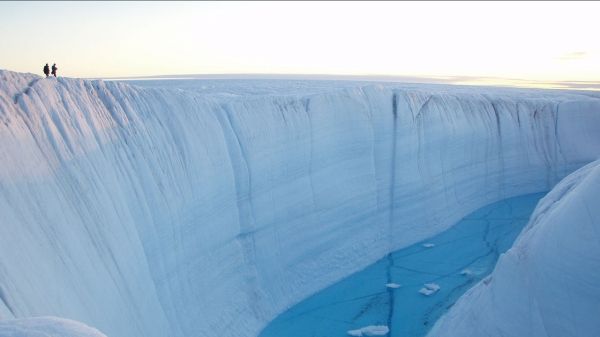Scientists have known for years that warming global climate is melting the Greenland Ice Sheet, the second largest ice sheet in the world. A new study from the Woods Hole Oceanographic Institution (WHOI), however, shows that the rate of melting might be temporarily increased or decreased by two existing climate patterns: the North Atlantic Oscillation (NAO), and the Atlantic Multidecadal Oscillation (AMO).
Both patterns can have a major impact on regional climate. The NAO, which is measured as the atmospheric pressure difference between the Azores and Iceland, can affect the position and strength of the westerly storm track. The study, published in Geophysical Research Letters, found that when the NAO stays in its negative phase (meaning that air pressure is high over Greenland) it can trigger extreme ice melt in Greenland during the summer season. Likewise, the AMO, which alters sea surface temperatures in the North Atlantic, can cause major melting events when it is in its warm phase, raising the temperature of the region as a whole.
If global climate change continues at its current rate, the Greenland ice sheet may eventually melt entirely—but whether it meets this fate sooner rather than later could be determined by these two oscillations, says Caroline Ummenhofer, a climate scientist at WHOI and co-author on the study. Depending on how the AMO and NAO interact, excess melting could happen two decades earlier than expected, or two decades later this century.
"We know the Greenland ice sheet is melting in part because of warming climate, but that’s not a linear process," Ummenhofer said. "There are periods where it will accelerate, and periods where it won’t."
Read more at Woods Hole Oceanographic Institution
Image: Scientists stand on the edge of a crevasse formed by meltwater flowing across the top of the Greenland Ice Sheet during a WHOI-led expedition in 2007. (Photo by Sarah Das, Woods Hole Oceanographic Institution)


